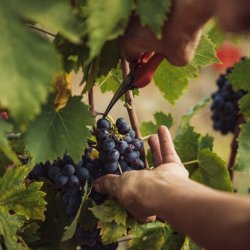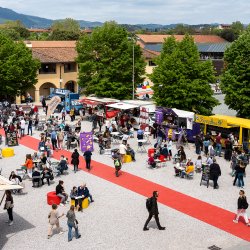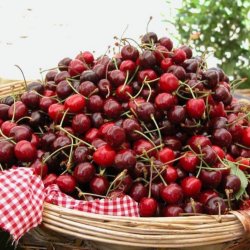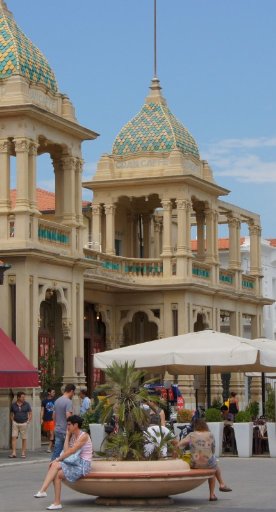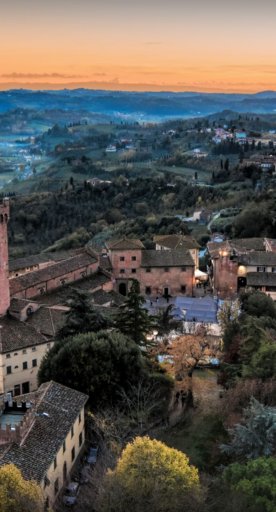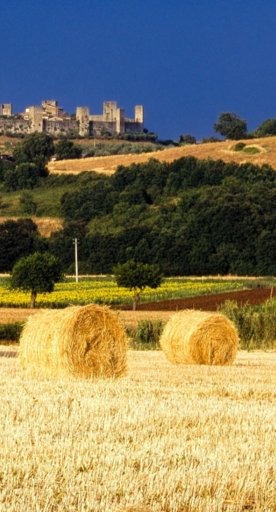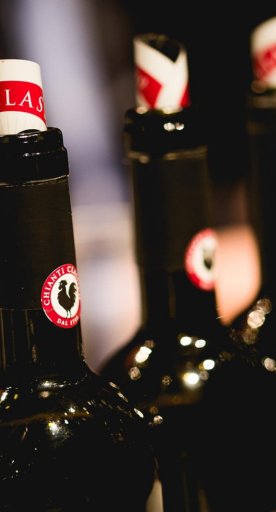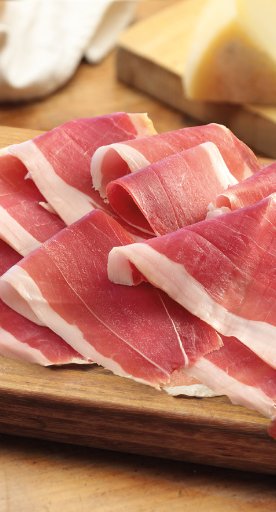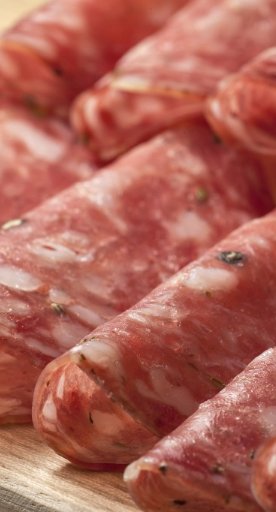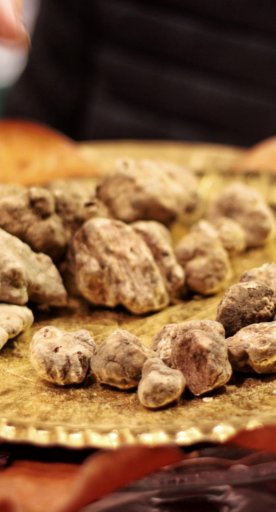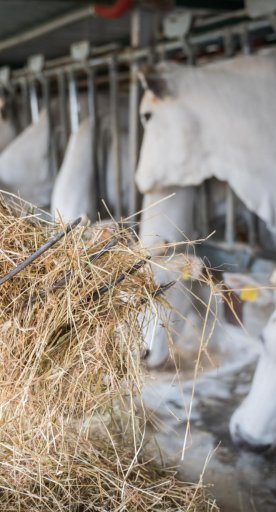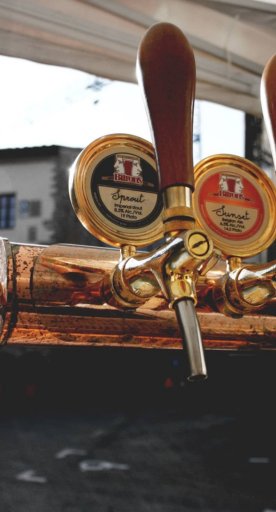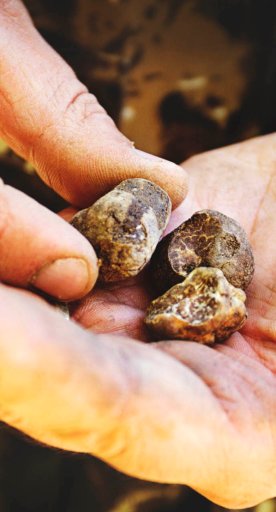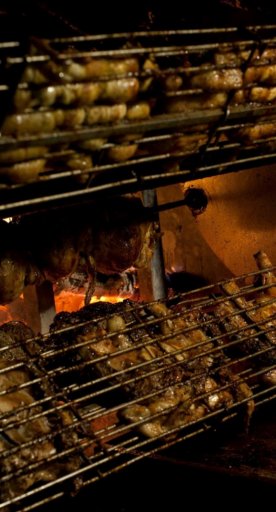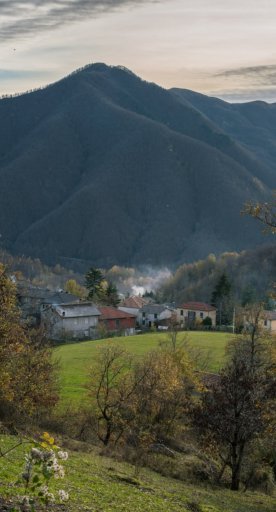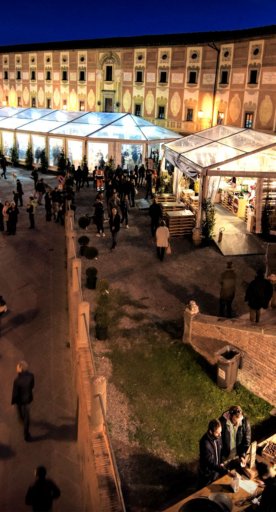

The flavors of Siena and surrounds
Pasta, cured meats, cheeses, desserts, wines ... a journey of tastes to discover a culinary heritage
Piazza del Campo, the Palio, Ambrogio Lorenzetti—these are the most common reasons to visit the city of Siena. Yet, there are dozens of motivations to go to Siena, including, obviously, the ancient culinary heritage.
Of course, Sienese cuisine offers typical Tuscan dishes (such as Ribollita, Arista and Fagioli all’Uccelletto) enriched with garlic and herbs such as rosemary.
From appetizers to dessert, a rich, plentiful and varied menu is created, in which flavor meets the best of tradition.
-
1.Pici and more
-
2.Cinta Senese cold cuts
-
3.Cheeses: many varieties of pecorino
-
4.Raising a toast with Sienese wines
-
5.Sweets, with dried fruits and spices
Pici and more
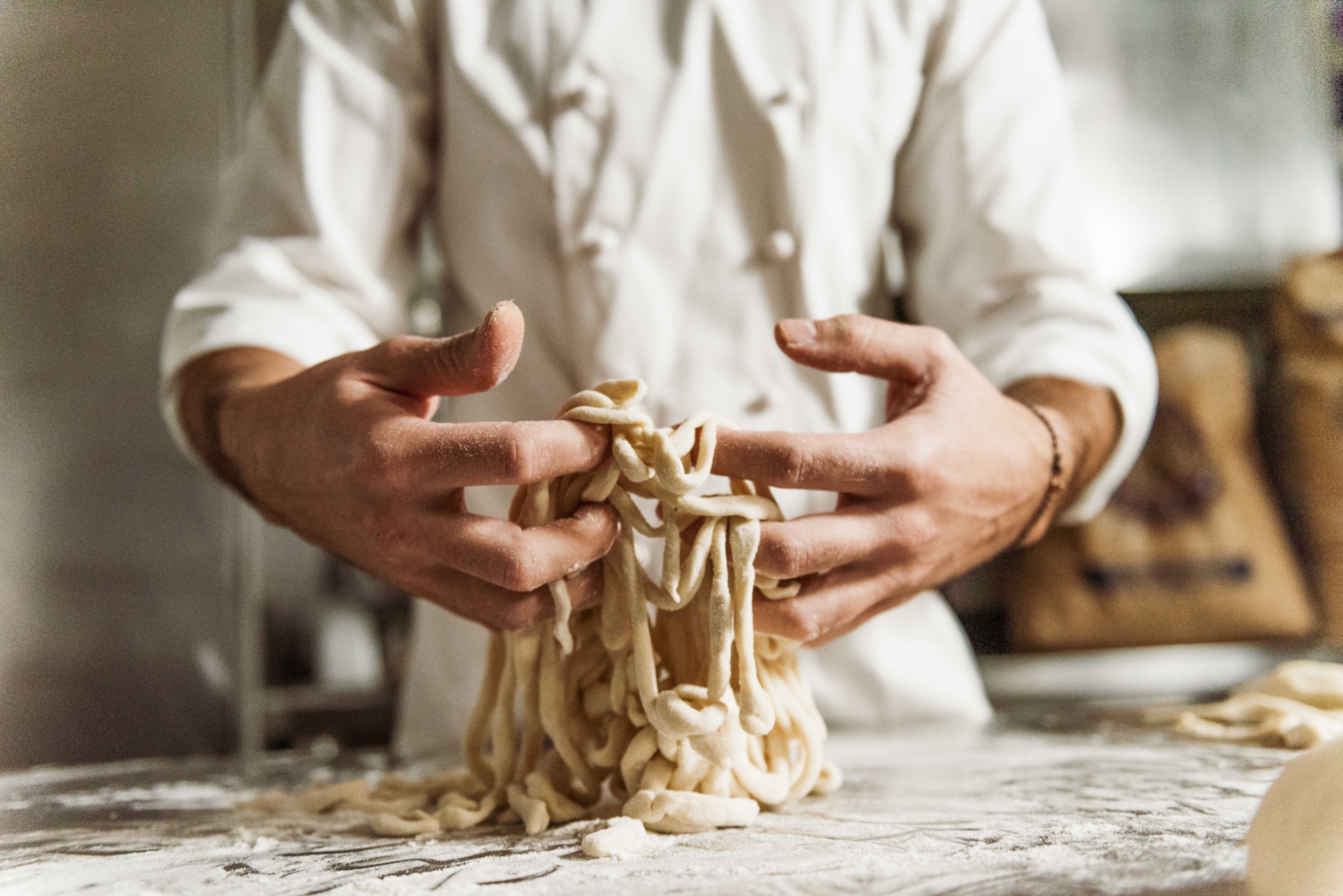
In Siena, pasta is synonymous with Pici, a typical handmade pasta, a kind of spaghetti rolled out by hand to the desired length.
The traditional recipe for Pici, a ‘poor man’s’ dish, consists only of flour and water, with no eggs. This pasta is enjoyed with Chianina (beef), Nana (duck) or Selvaggina (game) ragout, or else with tomato sauce enriched by a special type of very large yet mildly flavored garlic called aglione.
Pici is also fantastic simply topped with breadcrumbs from the typical pane toscano (Tuscan bread), toasted in a pan with a drizzle of extra-virgin olive oil.
But this is not the end of the story! In the heart of the Crete Senesi, in Asciano, high quality pasta is produced using selected ancient grains, in particular Senatore Cappelli durum wheat.
The pasta is made with traditional methods and ancient tools, availing of bronze dies to produce about 40 different shapes.
Cinta Senese cold cuts

Among the cured meats, the place of honor undoubtedly belongs to products made from the meat of Cinta Senese, a breed of pig raised in the wild or semi-wild. Their name, with “Cinta” meaning “belt”, comes from the characteristic white band around the waist of the animal.
The presence of the Cinta Senese in Tuscany has very ancient origins. Its representations have even been found in Lorenzetti’s famous fresco, The Allegory of Good and Bad Government (1338–40) found in Siena’s Palazzo Comunale.
Grazing ensures the good health of the Cinta Senese and a limited amount of fat in the meat.
The Cinta Senese Consortium was established to protect and promote this local pig.
The best-known cured meats are Prosciutto, Finocchiona, Mortadella Senese (a type of salami), Lombata, Salsicce Stagionate (cured sausages), Gota, Capocollo and Rigatino.
Cheeses: many varieties of pecorino
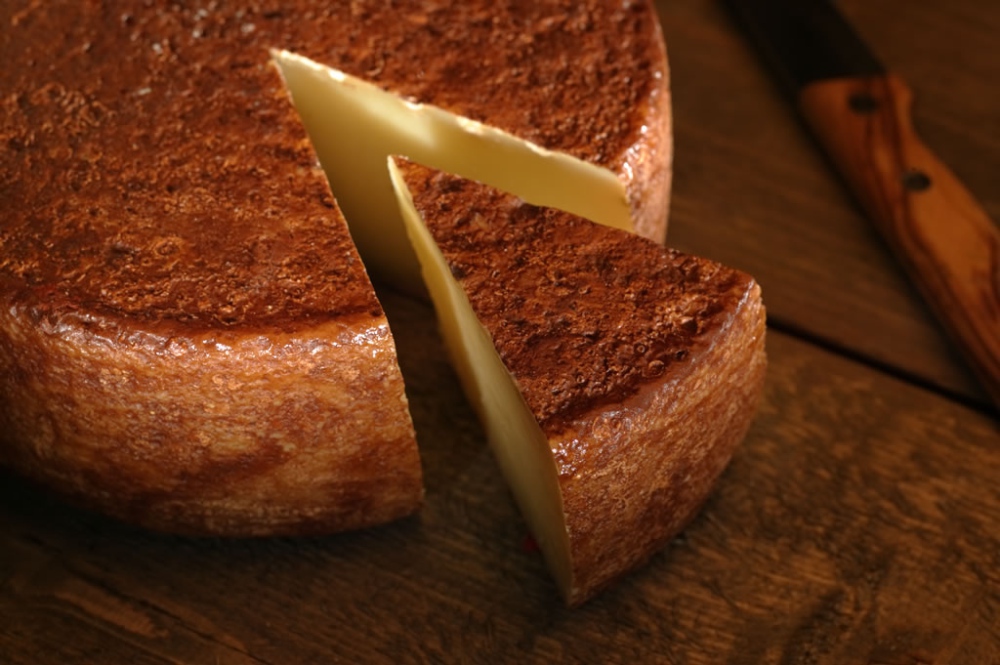
The Siena area is also known for the quality and flavor of its cheeses.
Pecorino Toscano DOP (or, PDO Tuscan Pecorino), a cheese found all around Tuscany, is preserved fully immersed in extra-virgin olive oil, along with pepper and bay leaves, and can also be eaten grated to flavor dishes such as Ribollita and pasta, if aged to the right degree.
Another popular cheese is Marzolino, an extremely refined pecorino (sheep milk cheese) with a special characteristic: dried thistle flowers are used as plant rennet in its manufacture.
In keeping with local tradition, other pecorino cheeses are processed in barriques or wrapped in walnut leaves. Some are uncommon due to being produced in small quantities, such as Fossa del Greppo (characteristic of Montepulciano) preserved in caves dug into tuff.
Others, however, are more well known. There is the Pecorino di Pienza aged in barriques to produce a hard cheese with a strong and unique character enriched by a tannic aftertaste and slight notes of pomace.
This Pecorino comes from the milk of a sheep breed from Sardinia, following production methods handed down through the ages. The special characteristic of being aged in oak barrels helps create a distinctive flavor profile.
Raising a toast with Sienese wines

When it comes to choosing a wine to go with local specialties, there is a huge selection from Siena. This great wealth is due to the soils and favorable climatic conditions of Tuscany, as well as to the work of so many people who continue to pass on the tradition of wine production with much love and experience.
With a long tradition but little known is the Bianco della Val D’Arbia, a modern white wine with ancient roots, produced in both the Chianti Classico and Chianti Colli Senesi areas as far as the Val D’Arbia.
Although made today using the most advanced winemaking techniques, it has its origins in traditional Chianti white wine. This wine is a good choice for cocktail hour and even pairs well with seafood dishes, vegetables, soups and white meat.
Also worth trying are Grance Senesi wines, being intense, with hints of fruit and a dry, harmonious flavor.
In addition, the countryside that embraces Siena offers the opportunity to taste some of the world’s most famous wines such as Brunello di Montalcino, Nobile di Montepulciano and some Chianti reds.
Sweets, with dried fruits and spices
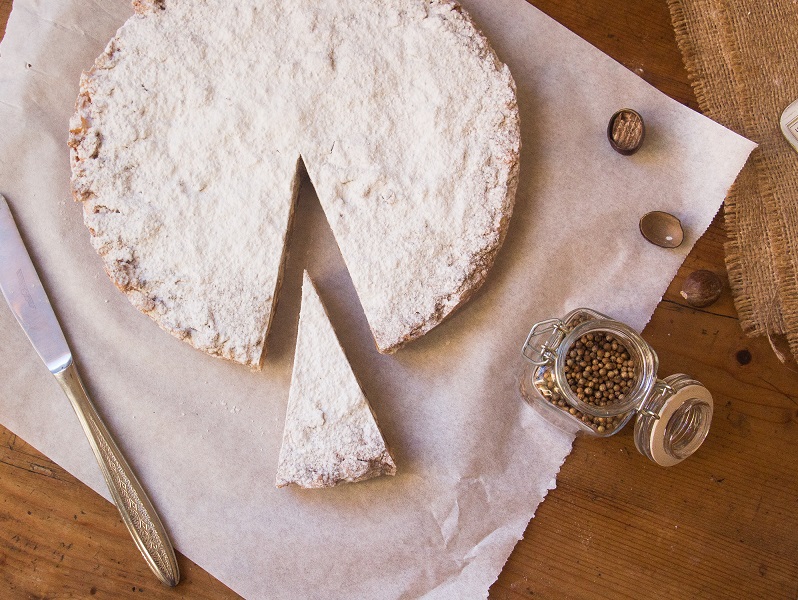
Tasting the iconic Sienese sweets, Panforte and Ricciarelli, cannot be missed.
Panforte is a typical Christmas treat but can be found all year round in Siena. Flat and round in shape, this cake is sprinkled with sugar, offering a unique texture due to the large amount of candied and dried fruit it contains.
This particular sweet is made following the truly historic tradition that was entrusted to the physicians and apothecaries of Siena, since it was exclusively intended for the nobles, wealthy families and clergy due to being made with valuable and expensive ingredients.
At the time, the flavor was strong and bold (in fact, the cake was known as Panpepato or “peppered bread”). But on one special occasion, when Queen Margaret visited the city of Siena in 1879, an apothecary prepared an experimental version, without the melon preserve and with a vanilla sugar coating instead of black pepper. The Sienese offered the cake to the Queen, calling it “Panforte Margherita,” being sweeter and more delicate, similar to what we can taste today.
The city of the Palio boasts yet another popular product, characterized by softness and sweetness. Ricciarelli are sweets made from almonds, sugar and egg whites.
Legend has it that it was Ricciardetto Della Gherardesca who brought the ancestors of Ricciarelli (marzipan sweets) to Tuscany upon returning from the Crusades.
Other white-color treats are the Copate, a kind of almond crisp enclosed in two thin wafers. It is said that these sweets, originally made only during the Christmas and Easter holidays, were reserved for popes and high prelates who came to Siena. The name hails from the Arabic qubbiata, meaning almond.
Moving on to the Croccolato, we have a sweet comparable to a nougat with a firm texture. Its flavor comes from almonds and dark chocolate. The basis of this recipe is a combination of spices typical of the Sienese tradition: dried fruit, candied fruit and honey.
Last but not least, Pan Co' Santi is prepared in autumn, especially to mark the occasion of Ognissanti (All Saints’ Day).
As with most ancient Sienese pâtisserie products, the dried fruits and spices that merchants in the Middle Ages once brought back from their travels abroad are used here.
And the long list of products to enjoy continues ...
All that’s left to do is travel and to taste!
